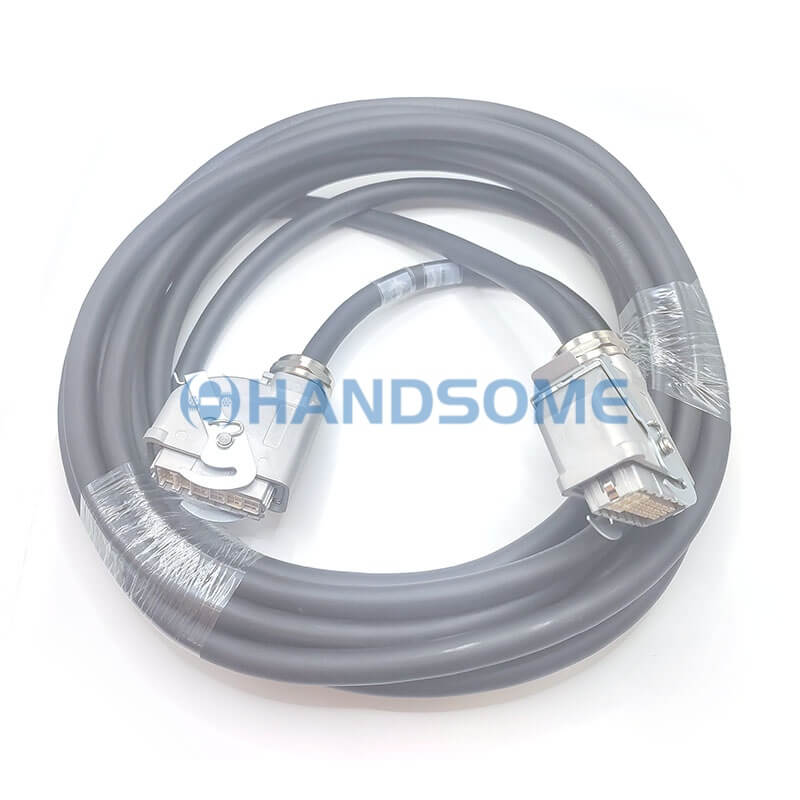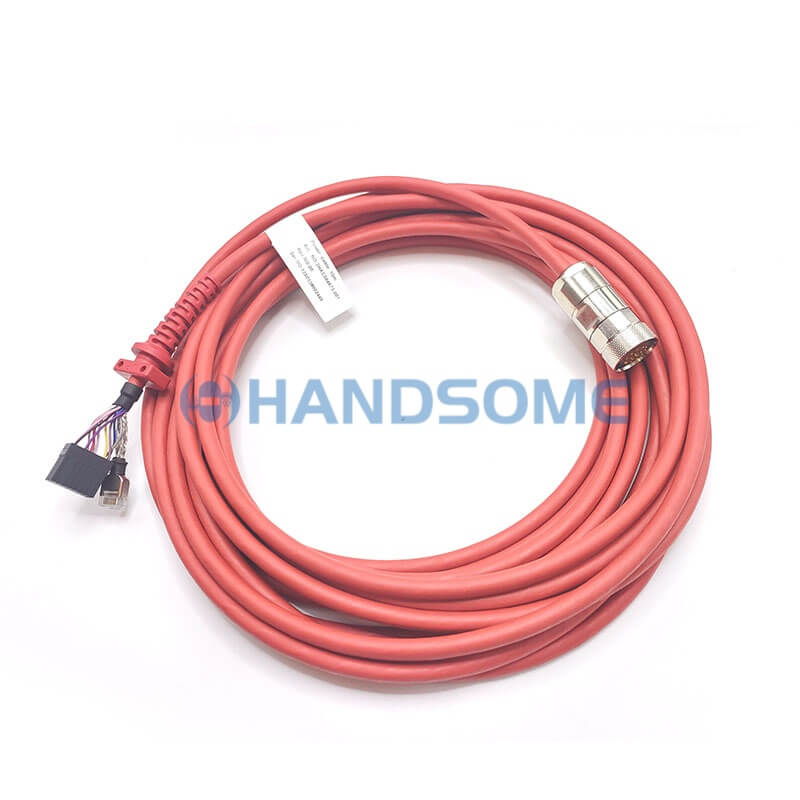Table of Contents
Wire harnesses are the backbone of many industrial, automotive, and consumer electronics systems.
Whether you’re working with high-tech machinery, cars, or household devices, wire harnesses provide the essential connections needed for power and data transmission.
However, to ensure these connections are reliable and long-lasting, it’s critical to have a solid quality control (QC) process in place during the manufacturing of wire and cable harnesses.
As a manufacturer in the wire harness industry, I’ve seen firsthand the difference a strong quality control process can make.
One of the most memorable moments in my business career was when we caught a potential issue during our QC check, which could have cost a client thousands of dollars.
That incident taught me the importance of strict testing and validation before any product leaves the factory floor.
In this article, we’ll explore why quality control is vital, the different steps in a QC process, and how it can ultimately lead to better products and satisfied customers.
Along the way, I’ll share insights and personal anecdotes to highlight key points.
Why Quality Control Matters in Wire Harness Manufacturing
Preventing Faulty Products
Quality control ensures that every wire harness produced meets the highest standards.
A defective wire harness can cause equipment failure, electrical shorts, or even dangerous malfunctions.
For instance, imagine the safety risks if a car’s electrical system fails because a wire harness was poorly manufactured.
Quality checks reduce the risk of such failures by ensuring each product is properly constructed.
Reducing Returns and Customer Complaints
If you’re in the wire harness business, returns are the last thing you want.
Every return means extra costs, customer dissatisfaction, and potential damage to your reputation.
Implementing rigorous quality control helps avoid defects that could lead to returns.
I remember one particular case where a customer was almost ready to pull out of a long-term deal due to an issue with a batch of harnesses.
Fortunately, our QC team identified and fixed the issue early on, and we were able to deliver the product on time.
The client remained happy, and we learned the importance of meticulous QC procedures.
Meeting Regulatory Standards
Wire harnesses are often used in industries with stringent regulatory standards, such as automotive, aerospace, and medical devices.
In these industries, faulty wire harnesses can lead to non-compliance, legal penalties, or even harm to users.
QC is essential to ensure compliance with industry standards, like ISO certifications or specific safety regulations.
Steps in the Wire Harness Quality Control Process
A robust quality control process involves multiple stages to ensure the final product meets all required specifications.
Here’s a breakdown of key QC steps involved in wire harness manufacturing:
1. Visual Inspection
Visual inspection is the first line of defense in quality control. Before anything gets tested mechanically, a technician will inspect the wire harness for obvious defects—like incorrect routing, improper insulation, or missing components.
I’ve personally overseen these checks many times, and I can’t emphasize enough how vital they are in catching simple issues early.
For example, one of our clients received a batch with several loose connectors that were easily spotted through a visual inspection.
By catching the issue upfront, we avoided a costly recall.
2. Continuity Testing
Continuity testing checks whether electrical paths are correctly connected throughout the harness.
Using specialized equipment, you can ensure that there are no open circuits or incorrect connections.
It’s the first real test of whether the wire harness will perform under its intended conditions.
During this phase, I’ve seen how important it is to use the right testing equipment and calibrate it regularly.
This ensures consistency and avoids issues with defective products.
3. Pull Testing
Pull testing ensures the physical durability of connectors and wires in the harness. The goal is to simulate the forces a harness might experience in real-world applications to make sure nothing will break loose or cause failure.
I recall a situation where we were designing a custom harness for an automotive client. The pull test revealed that one of the wire connections wasn’t strong enough, which could have resulted in a serious malfunction during high-speed driving.
4. Insulation Resistance Testing
Wire harnesses are designed to prevent electrical leakage, which is why insulation resistance testing is crucial.
This step ensures that the wire insulation is intact and provides a proper barrier to electrical flow.
Failure to do this test could lead to short circuits or electrical fires.
I’ve seen this happen in older products that didn’t undergo proper insulation testing, which is why it’s one of the most non-negotiable steps.
5. Environmental Testing
Wire harnesses often operate in harsh environments, including extreme temperatures or exposure to chemicals.
Environmental testing subjects wire harnesses to simulated real-world conditions.
Whether it’s heat cycling, salt spray, or vibration testing, this is where the rubber meets the road.
We once worked with a client in the aerospace industry, and the environmental tests proved essential in ensuring the wire harnesses could withstand the high altitudes and fluctuating temperatures without degrading.
Best Practices for Effective QC in Wire Harness Manufacturing
Now that we’ve gone through the steps, let’s look at some best practices to help optimize your quality control process.
1. Automate Where Possible
Automating repetitive tests—such as continuity testing or pull testing—can reduce human error and speed up the process.
I’ve implemented automated testing systems in our manufacturing line, and it made a world of difference in terms of speed and accuracy.
2. Maintain a Detailed Inspection Checklist
Every wire harness should be inspected based on a standardized checklist.
This ensures consistency and prevents vital checks from being overlooked.
I remember during a production cycle we missed checking one tiny specification, and it delayed the entire project. That taught us to always follow a strict checklist.
3. Invest in Training for QC Personnel
Your QC team plays a crucial role in the success of your manufacturing process.
Regular training on new technologies, updated regulations, and best practices helps ensure your team is always ahead of the game.
I’ve seen how the knowledge and expertise of our QC staff can turn an average production line into a high-performing one.
4. Use Statistical Process Control (SPC)
SPC is a powerful tool in manufacturing that helps monitor and control processes through statistical methods.
By using SPC, you can track trends and identify potential issues before they become major problems.
I’ve personally used SPC charts to predict defects based on historical data, which helped us adjust production methods proactively.
A Table for QC Testing Criteria
| Test Type | Purpose | Equipment Used | Frequency of Testing |
|---|---|---|---|
| Visual Inspection | To identify obvious defects | Magnifying tools, visual aids | Every batch |
| Continuity Testing | Ensure electrical connectivity | Multimeter or continuity tester | Every batch |
| Pull Testing | Test the physical durability of harnesses | Pull tester | Random sample, per batch |
| Insulation Resistance Testing | Verify insulation integrity | Insulation resistance tester | Every batch |
| Environmental Testing | Simulate real-world operating conditions | Environmental test chamber | Periodic for specific projects |
Final Thoughts
Quality control in wire harness manufacturing isn’t just about catching defects—it’s about ensuring your product works as intended and can withstand the rigors of its end-use environment.
Implementing a solid QC process not only protects your clients but also helps you build a reputation for reliability and excellence.
Over the years, I’ve learned that great products aren’t just built on quality materials—they’re built on a foundation of rigorous testing and attention to detail.
Whether you’re manufacturing wire harnesses for automotive, aerospace, or industrial use, quality control is a must.
By investing in strong QC practices, you’ll be able to provide your customers with the assurance that your wire harnesses are built to last, perform well, and, most importantly, keep them safe.

